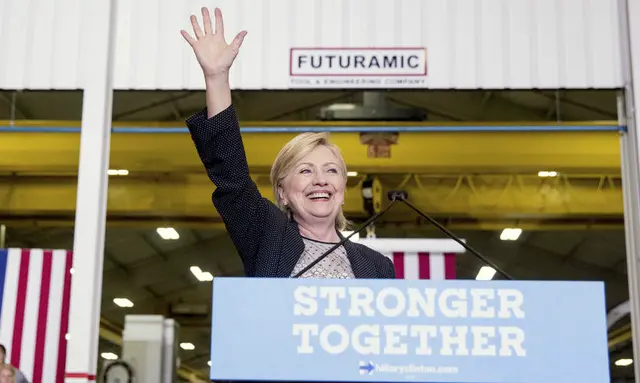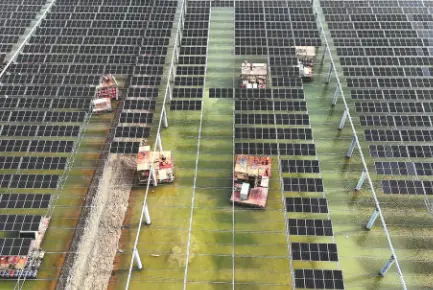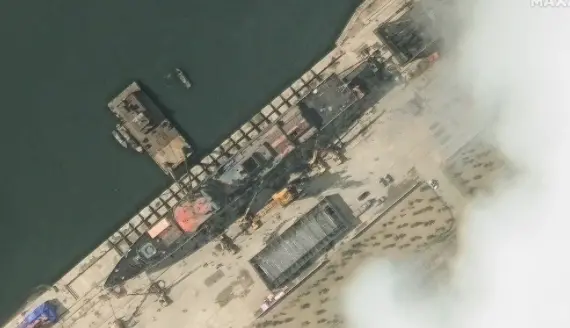Donald Trump and Hillary Clinton spelled out their economic visions in high-profile speeches in Michigan last week. They delved into taxes and regulations, trade deals and job growth.
Yet perhaps most notable about their speeches is what they left out.
Mostly unmentioned were major challenges that have slowed the U.S. economy and made good-paying jobs harder to find, particularly in struggling pockets of the country. They are challenges that tend to preoccupy economists and defy simple fixes:
A less efficient workforce. A dwindling proportion of adults either working or looking for work. Automation and increasingly high-skilled jobs that require technological know-how that many people lack.
They are problems that analysts say require a transformative vision. Yet neither candidate voiced anything like the high-reaching themes that were hallmarks of previous campaigns — from Bill Clinton’s “Bridge to the 21stcentury,” which urged Americans to face a more globalized economy, or George W. Bush’s “No Child Left Behind,” which sought to overhaul public education to better serve more children.
Each promised a bright future but also spotlighted the country’s challenges.
“It’s much easier to be either optimistic about the future or harp on problems that voters already recognize,” said Daron Acemoglu, an economist at the Massachusetts Institute of Technology who has studied the impact of automation on the workforce.
When Trump spoke Monday and Clinton followed on Aug. 8, each pledged more spending for rebuilding roads, bridges, tunnels and other infrastructure, which many economists say is long overdue. Such work, beyond creating more construction jobs, could ultimately lower transportation costs, raise workers’ productivity and accelerate economic growth.
But economists worry that the United States faces long-run challenges beyond dilapidated airports and tunnels. An economy’s ability to expand is shaped largely by two trends: The size of its workforce and how much its workers produce for each hour on the job.
In both areas, the United States is weakening. In the past decade, the workforce has grown an average of just 0.5 percent a year — barely half its post-World War II pace. Much of that slowdown is due to the continuing retirements of the vast baby boom generation, 10,000 of whom turn 65 every day. Similar demographic trends are also bedeviling Europe and Japan.
And productivity — output per hour worked — has increased an average of just 0.6 percent a year in the past five years, the slowest pace since the recession of the early 1980s. Rising productivity is vital to raising living standards because it allows businesses to pay employees more without having to raise prices.
All of which means the United States may be stuck in a low-growth rut for years to come. Federal Reserve officials now estimate that the economy’s growth potential is only 1.8 percent to 2 percent a year, down from 2.5 percent to 2.8 percent five years ago.
That broader slowdown went unmentioned by either candidate. Potential solutions are complicated and in many cases wouldn’t be popular with voters.
For example, most economists consider increased immigration not a problem but a solution — to the challenge of an aging U.S. workforce. More legal immigrants would accelerate workforce growth. Yet few issues are as contentious in this election.
William Galston, a senior fellow at the Brookings Institution, said immigration reform, if it provided a path to citizenship for people who entered the country illegally, would be economically beneficial — in part because it would bar employers from underpaying those workers and thereby give them more spending power.
Galston argued that Japan’s economy, which is aging faster than the United States and has barely grown for two decades, has suffered from an “absolute refusal to countenance immigration.”
In her speech, Clinton briefly mentioned “comprehensive immigration reform” and said it would “unleash a lot of new income and growth.” Trump, who launched his campaign with promises to build a wall to keep out Mexicans, barely mentioned the issue.
(ASSOCIATED PRESS)
 简体中文
简体中文











